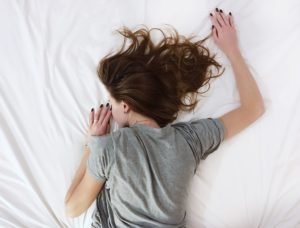Lumbar spine stenosis is a condition affecting 30 percent of older adults. You may think you have no idea what I am talking about but believe me, you have seen in it! Imagine being towards to the back of the grocery store, perhaps by the meat counter or dairy aisle and you look over and see an older individual walking around the grocery store leaning on the cart and rounding their back. BINGO! This patient most likely has some degree of lumbar spine stenosis as this is a hallmark sign that allows them to walk with less pain and stiffness in their back and legs.
In fact, many times this is referred to as “Shopping Cart Sign” – a hallmark of lumbar spine stenosis
Most of the time the symptoms dramatically improve with rest (sitting) and come on after a set duration of walking. This can be a big problem that dramatically impacts someone’s quality of life because it limits their mobility.
I once had a patient that came to me with lumbar spine stenosis that had given up his Husker season tickets after almost 35 years because he said he couldn’t make it to his seats anymore.
Unfortunately, many of theses patients get passed around the healthcare team before they finally end up with the options of epidural steroid injections or lumbar spine surgery. There is clearly a need for non-surgical options for pain relief that addresses functional performance. I can assure you, there is a better way!
Study Design
A recent study examined three non-surgical options for patients with lumbar spine stenosis. Patients were enrolled and randomized to one of three groups:
1. Medical care included oral medications and potentially injections
2. Group-based exercise : generalized workout classes
3. Manual therapy / individualized exercise: performed by chiropractor or physical therapist
All interventions were completed over the course of six weeks and effectiveness and safety outcomes were assessed at 2 months and 6 months.
Results
A combination of manual therapy/individualized exercise provides greater short-term improvement in symptoms and physical function and walking capacity than medical care or group exercises, although all 3 interventions were associated with improvements in long-term walking capacity.
Take home message
There is a lot that you can do if you have been given a diagnosis of lumbar spine stenosis that does not involve injections or surgery. The number one thing is to stay moving.
Our approach in the clinic involves:
- Chiropractic manipulation to the back and hips
- Manual therapy to the lower back and hips
- Flexion based exercises
- Activity modification and encouragement to stay moving


